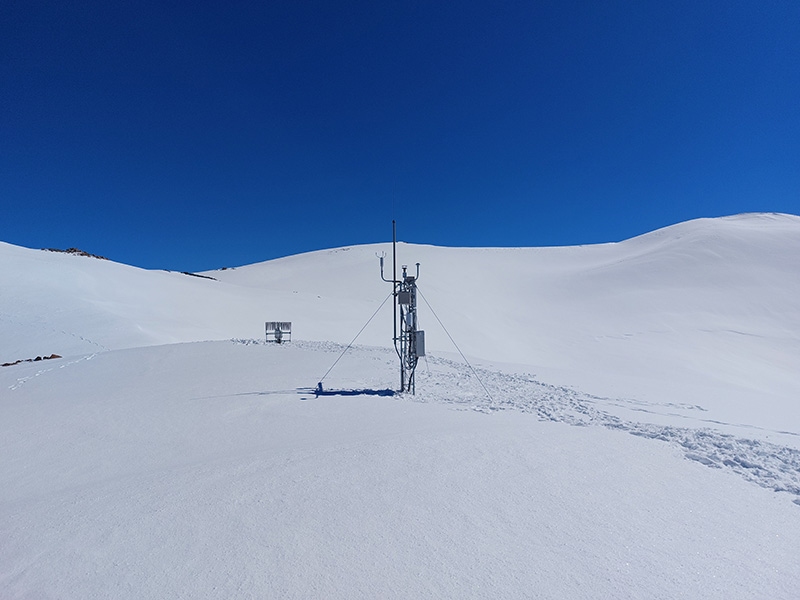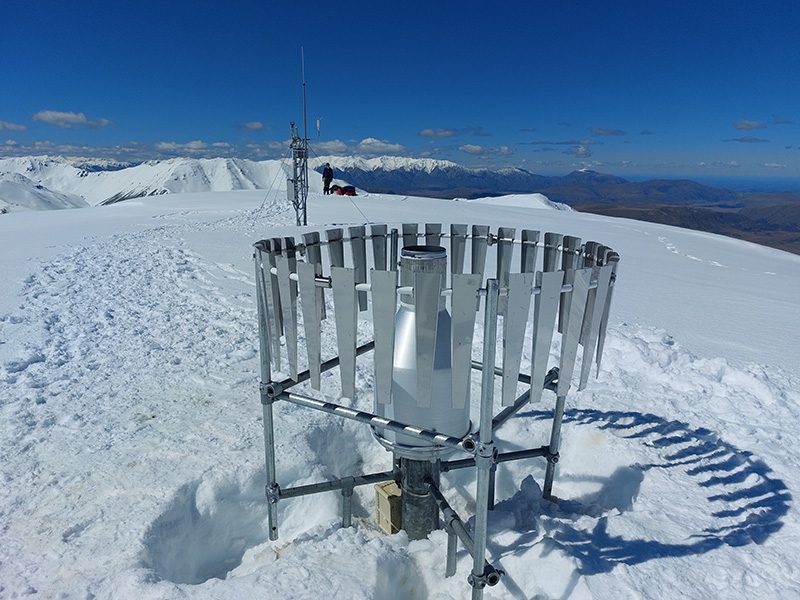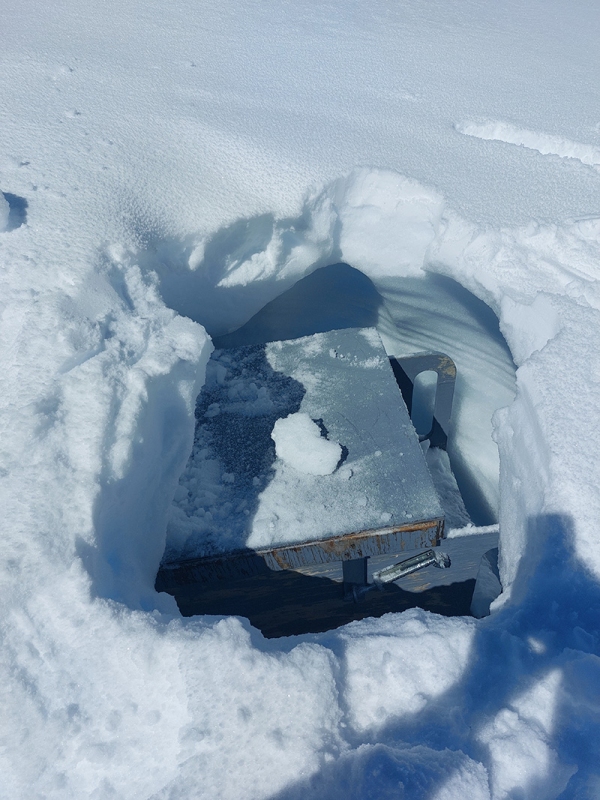Christchurch-based environmental monitoring technicians Alec Dempster and Pieter Havelaar got way off the beaten track this week, heading to a snow-covered Mt Potts for weather station servicing in clear blue skies and some of the deepest snow they’ve ever worked in.
Alec says the snow depth varied from 94 centimetres under the station’s snow sensor to over 2 metres in nearby drifts. Fortunately, the pair encountered a hard icy layer about 10cm down which made the going easier and gave them a solid foundation to work from.
Our Mt Potts weather station bristles with sensors that measure everything from snow depth, temperature, humidity, solar radiation, precipitation and wind. It forms part of NIWA’s snow and ice network – 11 high elevation stations that collect information about the amount, extent, seasonal nature and long-term change to snow and ice in our alpine regions.
NIWA field team members travel a few times a year to maintain the stations and make sure the sensors are all working properly.
Situated in Canterbury’s upper Rangitata Valley, the Mt Potts weather station was installed in 2009. A specialist Geonor precipitation gauge was added in 2016, along with a fuel cell generator to keep the set-up from freezing. The Geonor gauge collects snow and rain in a weighed bucket. A circle of fins around the gauge slows the wind so that snow can fall in during the wildest of weather.
On this latest trip, Alec and Pieter also took the opportunity to strengthen framing around the precipitation gauge. All the better to protect it from 200km/h nor ‘west gusts that regularly buffet the area.
Servicing the generator took a bit of doing this time around, says Alec. Its protective box had been completely covered by snow. But half an hour’s hard graft on the shovels saw to that.
Mt Potts experienced a large amount of snow this year – peaking over winter at 1.7m. That presents a special set of challenges when tuning weather sensing equipment, but wow it makes for a spectacular place to do fieldwork!



